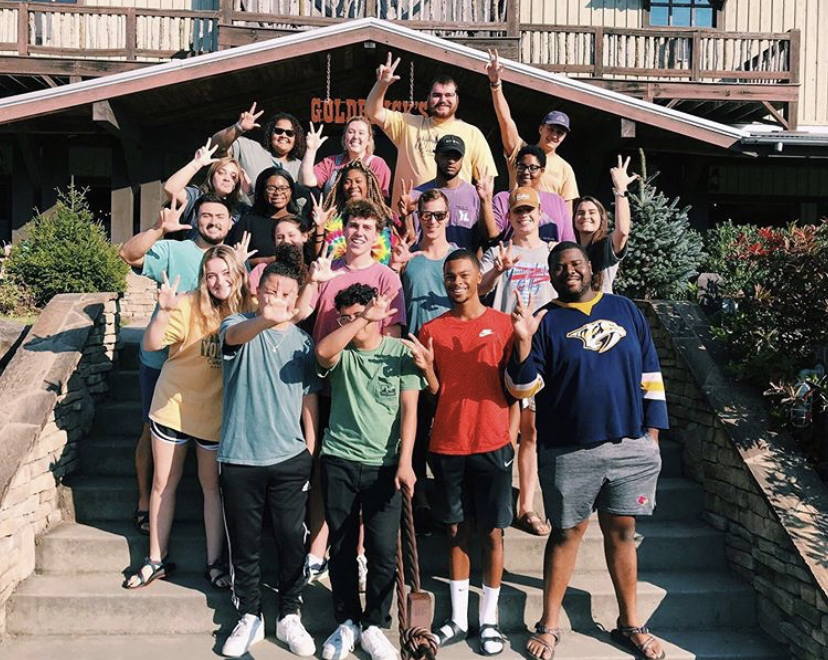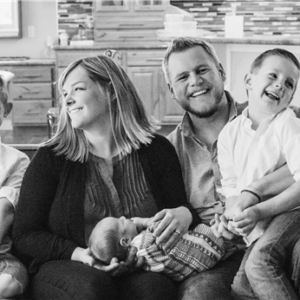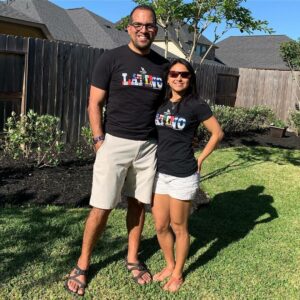
This semester on Tuesdays we’re taking a deep dive into Young Life team dynamics. If you missed the first couple posts, check them out here:
- Intro To Team Dynamics
- How To Handle Team Conflict
- More Than Ministry Partners
- Setting Clear Expectations
- Dating Among Teammates
- Leader Territorialism
This seventh post in the series was written by Zach Kreeger.
—
Simon Sinek has done an incredible job asking the question, “What is your Why?” But in Young Life, I think we get to ask just as influential of a question: “Who is your ‘We?’”
One of my favorite parts of the mission of Young Life is that we don’t work alone. The Young Life team sets the tone for every aspect of the ministry. When contact work happens, what songs are played at club, the vision cast in front of Campaigners… everything!
So who is your ‘we?’ What does your ‘we’ look like? These are important questions as who your current ‘we’ is dramatically affects who your future ‘we’ will be. The flip side of this is considering how your ‘we’ actually excludes or even wounds those who not only could be a part, but should be.
To be clear, while I think a team can be completely homogenous (say, for example, a team of all white men or Costa Rican women), and still be incredibly effective at reaching a wide spectrum of teenagers at a local school IF they have a focus and intentionality on inclusion and how they are going to reach that spectrum. If, however, they “do what comes naturally,” research shows they will struggle to reach kids other than who they personally represent.
How much more effective is a team that is intentionally inclusive? Men and Women. Introverts and Extroverts. Old and Young. Black, Latino, Chinese and every color and tongue represented in the student body (or better yet, the general population of your town)? What about wheelchairs or hearing aids? Wealthy and impoverished? What if one of our greatest opportunities to reach more young people in our local schools lies less in getting to the school more frequently and having the perfect post choir concert hang out plan.
What if it begins with not only creating space (passive) but inviting and including people (active) who represent this spectrum to be on our teams. What does it do for a kid who shows up to their first club and sees someone on stage that looks like them…or in the very least, sees someone in leadership they can identify with?
If there is a narrow mold of what a “great” Young Life leader should look like (23-27 years old… outgoing… funny… creative… a public speaker who can also sport a banana suit and look cool doing it – not to mention Chacos, Comfort Colors, and a Mountain Smith), we may be putting ourselves at a significant disadvantage.
A great Young Life leader is someone who loves kids and incarnates towards them in the name of Jesus. A great Young Life team is one that actually has a chance at reaching every kid at the school. They include each other, include kids, and work overtime to consider who they are excluding and how they are excluding in the systems their ministry creates. They consider the most marginalized people and work to not only get them there, but, like great educators, create space for them to grow.
This requires a significant amount of learning, focus, intentionality, and vision. After all, it’s much easier to go to one more sports event at the school than to pick up a book on systemic racism and consider what needs to change at club to better serve the marginalized student (and potential leader) in your ministry.
But in order for our teams to be able to reflect this dynamic inclusion and diversity, it will require intentional change and movement And it cannot be passive or ‘later.’ If we feel this burden appropriately, this is a mandatory and pressing need for change. We cannot afford to move at the pace of the majority, but must match the desperation of the marginalized to evolve and as my basketball coaches would always say, “move with a purpose.”
So, as you consider your team dynamics this semester, the question is now posed to you and your team: Who is your ‘We?’ And what do you need to be thinking and doing to create the best ‘We’ for ministry at your school and in your area? What can change this year? This semester?
Questions To Consider During Your Young Life Team Time
- What are the gaps on your team when you consider: gender, personality type, age, race?
- What have you read in the past year about race, ageism, or sexism? What might Jesus be inviting you to ‘lean in’ and learn more about in this next season BEFORE you act?
- Who in your life represents one of these ‘gaps’ in your team? Would anything need to change on your team for them to feel like they could be a part? To feel like they could be a great Young Life leader?
- To dovetail on the question above and lead the question to follow, when you consider the music you play at club, the race, gender and age of people on stage, and whose voices make decisions in your ministry, does it embody diversity or homogeneity(same-ness)?
- When you do contact work, do you intentionally seek out kids who are different than you and have you taken the time to understand how to approach them differently?
- Who comes to your club? Is it a reflection of the population of the community (not just your school) or is it a homogenous group?
- How are we discipling our Campaigners to be people who reach well beyond their ‘group’ to become intentional inviters of diversity?
We have opportunities now to engage diversity with intentionality like never before in a time in our nation where the value on it is at an all-time high. The best is that, if we can successfully lean into these at times difficult conversations and uncomfortable spaces, we ultimately sow seeds for the Young Life teams of the future to be full of the kids of today… diverse, represented, and equal. A home for every kid. That, to me, smacks something of the Kingdom of Heaven.
Reading/Viewing to get you started (recommended by Zach Kreeger)
- Disunity in Christ by Christena Cleveland
- Waking up White by Debbie Irving
- 4 Views on Pastoring LGBTQ Teenagers by Mark Oestreicher
- Julie Middleton’s Ted Talk on Core/Flex
- Fuller Youth Institutes work on Diversity (particularly their “Understanding and Relating” Booklets)
Other Next Steps
Take the CQ Assessment by David Livermore’s Cultural Intelligence Center
For those from the white majority (white folks), please be careful and thoughtful leaning into these discussions. What can feel like mere curiosity to you can be a question that exposes deep trauma in a friend. A culture of honor and love must be matched by our emotional and cultural intelligence if we are to drive at unity!




